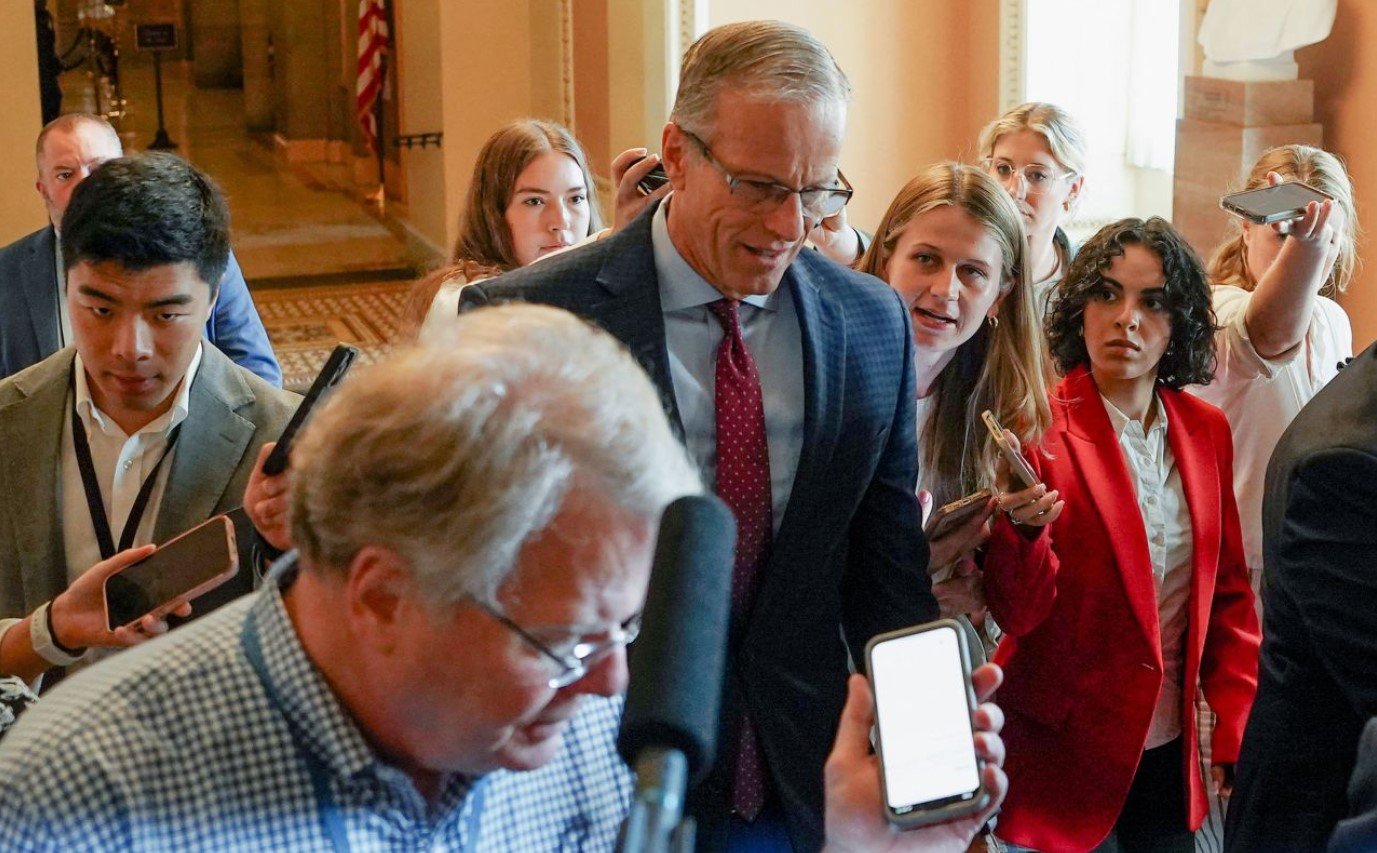
On June 29, 2025, the U.S. Senate passed a critical procedural vote to advance former President Donald Trump’s massive legislative proposal known as the “One Big Beautiful Bill.” With a narrow 51–49 vote, the bill cleared its first major hurdle, setting the stage for what could become one of the most consequential laws in modern American history.
Trump, serving his second term in office, has prioritized this bill as a symbol of his economic and border policy agenda, promising it would “make America strong, safe, and rich again.”
Let’s break down what’s inside this giant bill, how politicians and the public are reacting, and what happens next.
📜 What Is the “One Big Beautiful Bill”?
Trump’s One Big Beautiful Bill is a massive, 940-page omnibus package that blends tax reform, government spending, immigration enforcement, and entitlement restructuring. It is designed to serve as the cornerstone of Trump’s second-term domestic policy.
Key Provisions:
- Tax Cuts and Incentives
- Extends many of the Trump-era 2017 tax cuts.
- Adds new tax deductions for overtime pay and tipped workers.
- Temporarily raises the SALT deduction cap until 2029.
- Defense and Border Funding
- Dedicates over $350 billion to strengthen border security.
- Expands border wall construction, detention capacity, and immigration enforcement.
- Social Program Restructuring
- Cuts and reshapes Medicaid, though includes $25 billion for rural providers.
- Narrows eligibility for food stamps (SNAP) and other welfare programs.
- Debt Ceiling Increase
- Raises the debt ceiling by $5 trillion, which Republicans claim is essential to avoid a financial crisis.
- Energy Reform
- Rolls back green energy tax credits introduced during the Biden administration.
- Promotes fossil fuel subsidies and domestic energy manufacturing incentives.
🏛️ How the Vote Played Out
Despite Republican control of the Senate, the bill faced internal party opposition. Two GOP senators, Rand Paul (KY) and Thom Tillis (NC), voted against the motion to proceed.
- Sen. Rand Paul cited concerns about the growing national debt, calling the bill “fiscally reckless.”
- Sen. Thom Tillis expressed alarm over cuts to rural healthcare and has since announced he won’t run for re-election.
The remaining Republicans rallied after intense lobbying by Trump and Senate leaders. Vice President J.D. Vance was reportedly prepared to cast a tie-breaking vote, though it wasn’t needed.
On the other side, Democrats unanimously opposed the bill, forcing a marathon 12-hour reading of the entire text before the vote.
🧮 What Does This Mean for the Economy?
The financial implications of this bill are enormous.
- The Congressional Budget Office (CBO) estimates that over a decade, the bill could add up to $4.5 trillion to the national debt.
- At the same time, the Trump administration claims the bill will cut the annual deficit by $1.4 trillion through entitlement reform and economic growth.
But perhaps the most controversial element is the healthcare impact. Analysts suggest that the proposed Medicaid changes could result in 11.8 million Americans losing coverage by 2034.
💬 Political & Public Reactions
From the Right:
- Trump praised the vote as “a great win for the American people.”
- Sen. Josh Hawley, Sen. Rick Scott, and Sen. Mike Lee were reportedly persuaded to support the bill after behind-the-scenes deals.
From the Left:
- Senate Majority Leader Chuck Schumer called it “an assault on working families, healthcare, and American values.”
- Progressive groups warn it’s a gift to billionaires and a blow to the environment.
From Industry & Analysts:
- Elon Musk harshly criticized the bill on X (formerly Twitter), calling it “a disgusting abomination” and warning it could kill millions of jobs.
- Environmental groups said it threatens climate progress by eliminating clean energy tax benefits.
🇺🇸 Trump’s July 4 Deadline
Trump has set a hard deadline of July 4 to sign the bill into law. He envisions the holiday as a “symbol of economic rebirth and border renewal.”
To meet that deadline, the Senate must:
- Complete full debate and amendment votes in the coming days.
- Pass the final version with at least 51 votes.
- Send the bill back to the House of Representatives, where a slightly different version was passed earlier this month.
The White House hopes to fast-track the reconciliation process, which could face further delays if moderate GOP senators push back again.
📌 What’s at Stake?
If passed and signed, the One Big Beautiful Bill would be the most significant overhaul of U.S. fiscal, immigration, and social policies since the Affordable Care Act in 2010.
Potential Impacts:
- Middle-class tax relief for some—but likely offset by cuts to public services.
- Expansion of the border wall and detention infrastructure.
- Reductions in federal healthcare coverage, especially in rural and low-income states.
- New economic volatility due to the scale of deficit spending and debt ceiling increase.
This bill, if enacted, will almost certainly define Trump’s legacy—and shape America’s path for the next decade.
✅ Final Takeaways
- The U.S. Senate advanced Trump’s sweeping “One Big Beautiful Bill” on June 29, 2025, by a narrow vote of 51–49.
- The bill includes tax reform, border security expansion, healthcare cuts, and energy shifts.
- It faces strong opposition from Democrats, moderate Republicans, and economic analysts.
- Trump wants it signed by July 4, making it a symbolic and political milestone for his administration.
As the Senate debates continue, the entire nation watches closely. Whether you support the bill or not, it marks a defining moment in modern American politics.

